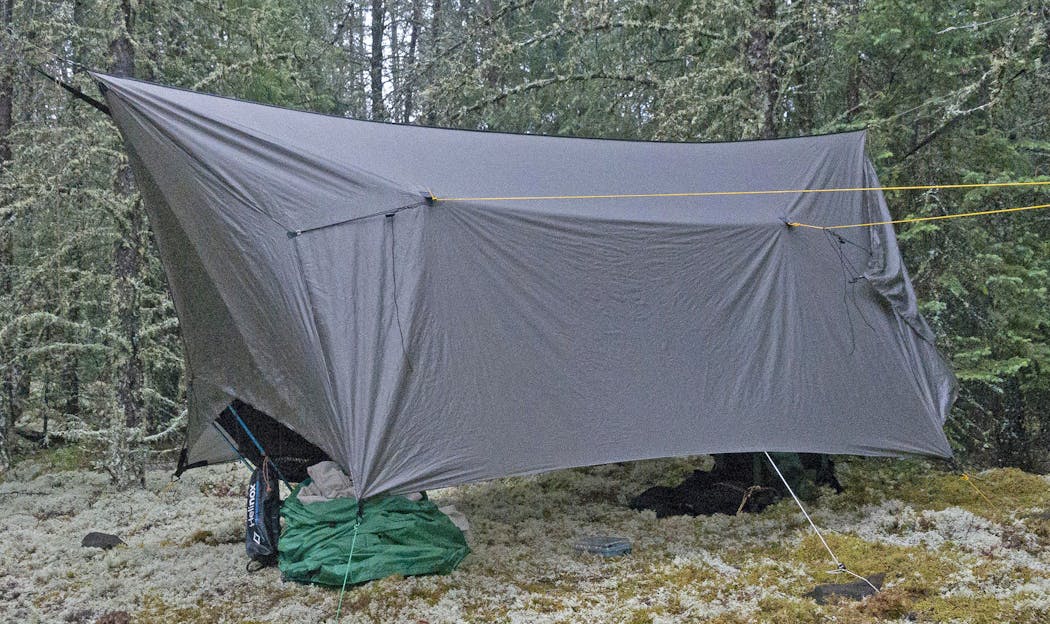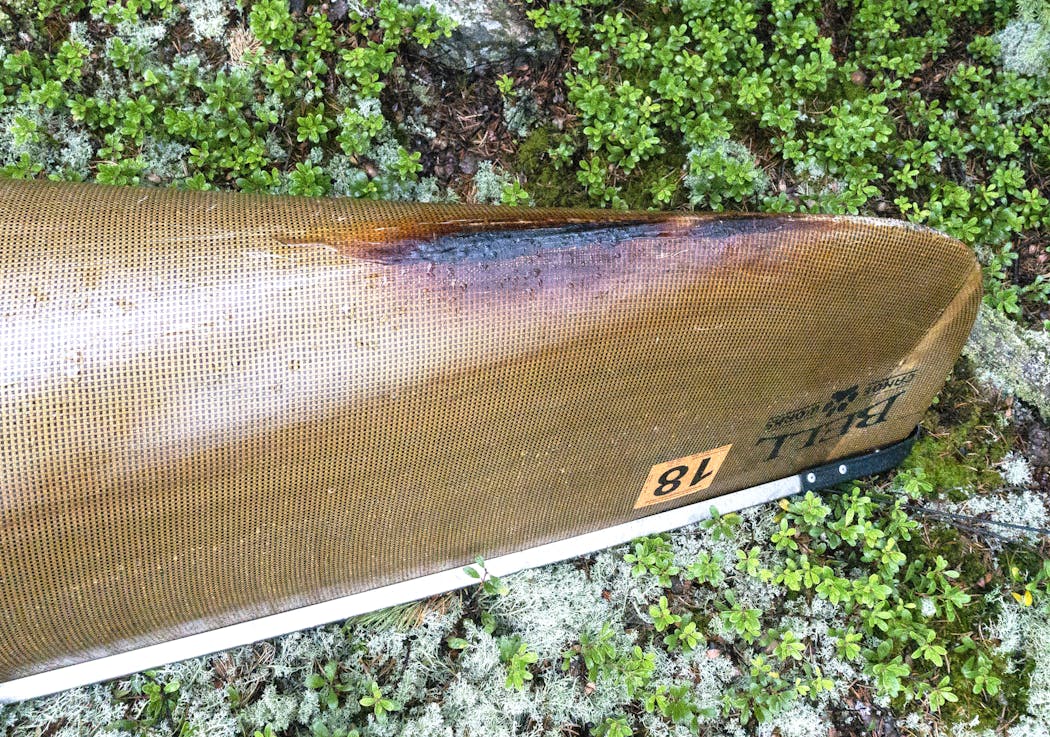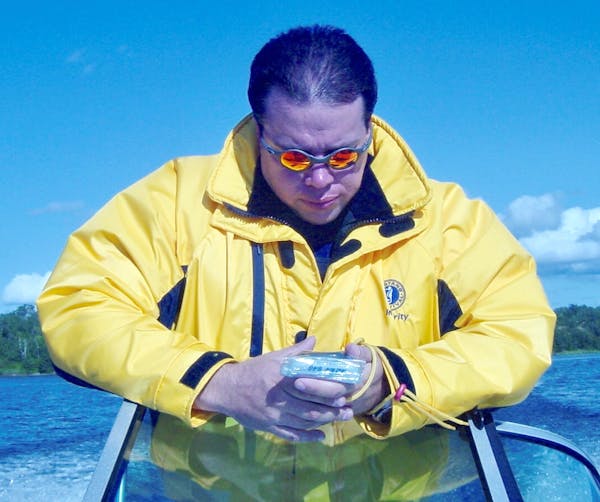In retrospect, had physician Pete Arnesen known that the first waters he would paddle after retiring would be pockmarked with forest fires, he would have undertaken the expedition anyway. But the experience nonetheless is seared in his mind, and will be recalled as a cautionary tale when planning future adventures.
Arnesen, 65, ended a long career as an internist at Woodwinds Health Campus in Woodbury in November. "Retiring gave me time for things I couldn't do while working,'' he said.
High on Arnesen's list was a solo canoe trip. After attending a Midwest Mountaineering Outdoor Expo last year, he settled on Ontario's Woodland Caribou Provincial Park — home, as the name suggests, to two species of endangered woodland caribou.
Lying about 240 miles north of International Falls, the wilderness area and its latticework of lakes and rivers had the right feel for a solo trip, Arnesen believed, and he hoped during his visit to see not just wild country but wild critters, including, perhaps, wolves and moose.
"The park and the area surrounding it were very dry,'' he said. "There were quite a few forest fires in the region at the time, and danger was imminent. On the other hand, there were no fire bans in place, and I weighed that when considering the seriousness of the fire threat. Also, I would be carrying an inReach [satellite communicating device], and if something dangerous came up, the outfitter could get that information to me.''
A consideration as well was that a significant portion of the park had burned two years ago, consuming about 183,000 acres. Effectively, these areas would serve as fire stops.
So it was on July 19, with his Bell Magic canoe strapped to the float thwarts of a Dehavilland Beaver, that Arnesen was flown to a drop-off lake within the 1.1 million-acre park. From the air, fires were visible in all directions, none of them being actively extinguished, which is park policy.
"It was extremely dry in the region and the fires has been started by lightning,'' he said. "But the fires looked different from fires I've seen pictures of in the [Minnesota] boundary waters and similar areas that are dominated by white and Norway pines. Those fires 'tower' with huge plumes.''
By contrast, Woodland Caribou park's smaller jack pines lent its fires a less menacing appearance.
The outfitter, while suggesting caution, raised no red flags. "He said it was up to me whether I wanted to go,'' Arnesen said.
Watching the floatplane disappear into the distance after being dropped off, Arnesen soon realized the park's scrubbier trees would prove challenging for use as stanchions to swing his hammock, which he uses for shelter instead of a tent.
The nearest fire, meanwhile, while unthreatening, was mesmerizing, like fireworks. The scene recalled for Arnesen when, years ago, he and a retired smoke jumper friend were paddling in the Boundary Waters Canoe Area Wilderness when lightning threatened to ignite similar infernos.
"I remember him saying, 'If there's a fire, we're going to stay and watch it,' ''Arnesen said. "Sad as the park's destruction was, I was thinking the same thing. It was a fascinating display to witness.''
Awakening the next morning, Arnesen turned on his inReach. The device provides GPS mapping, sends and receives texts and e-mails, and also can be an emergency transponder, signaling that a wilderness traveler is in trouble and needs evacuation.
Arnesen clicked on an unexpected e-mail from his outfitter.
"The message said that fires were coming toward me from the north and the south, and that the park service had closed the lake I was on,'' he said. "He said it was time to get out of the area.''
Packing his camp quickly and loading his canoe, Arnesen paddled south, as directed, across the lake, toward the nearest portage, 2.5 miles away. But reaching the far shore, he made a mistake, confusing one bay for another and missing the portage. By the time he corrected his position, firefighting helicopters were dropping water so near to him he thought he might get wet.
"By then the outfitter had e-mailed me again, but I didn't get that message,'' Arnesen said. "For some reason the satellite didn't hook up to my inReach, perhaps because of the smoke. I'd find out later the outfitter had asked for my location and told me to stay put until he redirected me.''
Ominously, the portage to the next lake had already burned. But based on what the outfitter had told him in his first e-mail, safety from new fires lay on its other end. Uncertain if that were true, Arnesen abandoned his pack, canoe and other gear and ran across the portage.
Reaching the footpath's far end, he assessed it to be safe and sprinted back for his gear. He didn't realize the moss infused in the portage's soil was still on fire.
"I carried my canoe across the portage and set it down,'' he said. "I didn't notice right away, not until I saw smoke. But the moss was so hot, the canoe was burning.''
Launching the craft extinguished the smoldering fire, and Arnesen eventually established a camp on a distant rocky shoreline among unburned jack pines.
Planned for 10 days, the outing ended on Day 8, when the physician-turned-retiree canoeist paddled 17 miles to a pickup point, where his outfitter met him.
Enthralled by the region, despite its fiery ambience, Arnesen returned to Woodland Caribou with a friend on Aug. 16 to paddle its waterways again.
A few days ago, acting park superintendent Kent Fraser told CBC news the fires will be allowed to burn themselves out.
"That's why we're monitoring them and not suppressing them," he said. "We're just allowing what Mother Nature wants to see on the landscape."
danderson@startribune.com

Anderson: Building a new Waterville fish hatchery will help shorten the time between bites

Anderson: Trailblazing sonar will be in thousands of boats for opener

Anderson: Celebrate Earth Day by rekindling real connection to nature
Anderson: Anglers protesting tough new Mille Lacs rules are wrong





